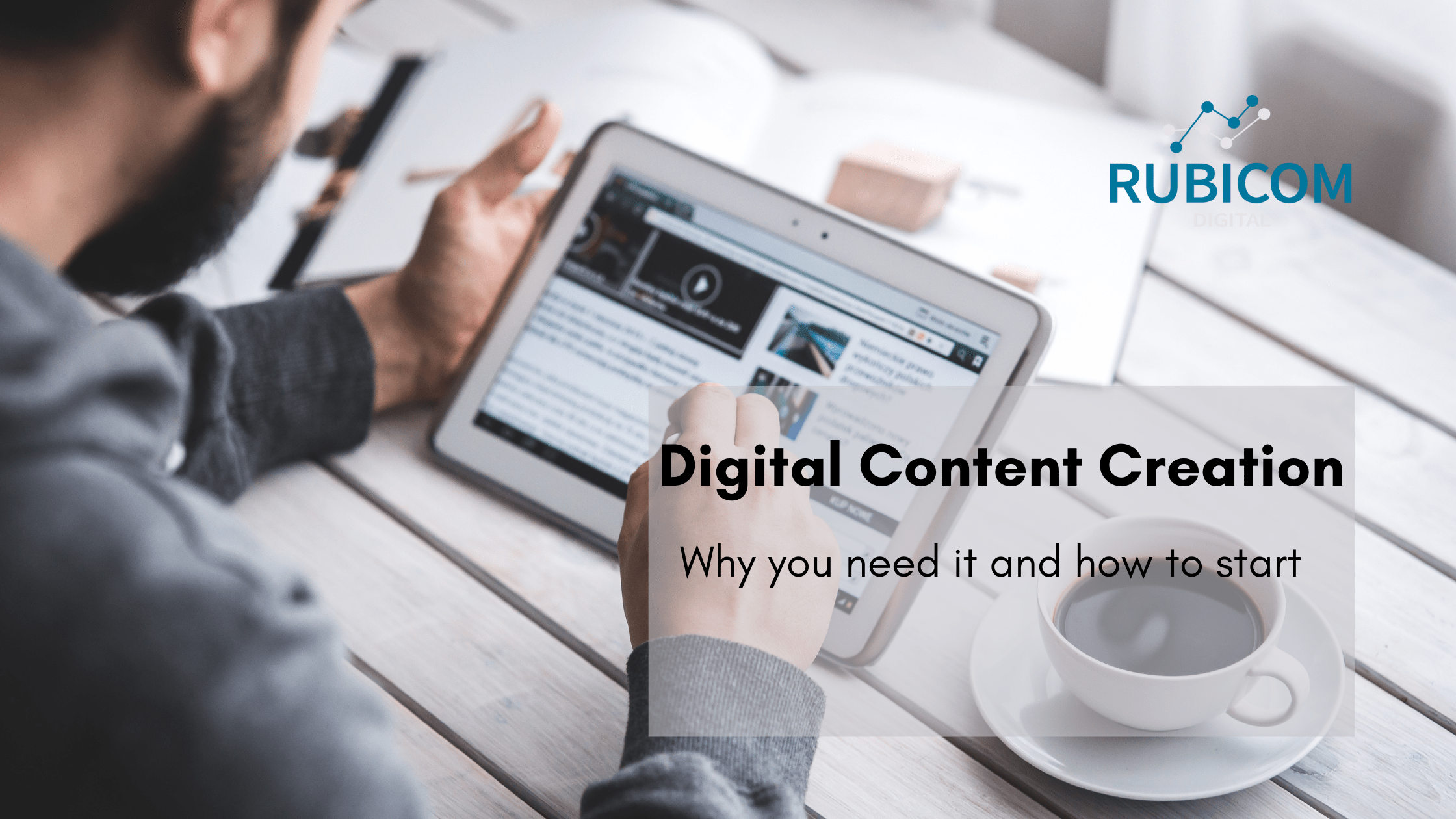Digital Content Creation: Why You Need it and How to Start
Digital content creation enables your business to move away from the physical marketing collateral that businesses’ have become used to over the years and toward a more modern approach.
In the past, you’d meet with a Sales Representative, they’d give you a piece of paper, and it would collect dust until you threw it away; Digital content creation enables a new form of information that your audience will actually read.
Why? Because they’ll be searching for it in the first place.
Where older marketing practices would give an audience whatever whitepaper fits their sales narrative, new marketing practices create content that your audience is searching for.
This discussion is going to go through why you need search-optimized, digital content creation; Including:
- The difference between traditional and digital content
- Why Digital Content Creation is Important
- How to Build a Strategy
- SEO & Digital Content Creation Working Together
Traditional vs. Digital Content Creation
To fully understand digital content creation, we need to understand the evolution of content.
Traditional: Physically tangible marketing content that was given to you whether you wanted it or not. This is typically in the form of a whitepaper, infographic, brochure, etc.
Example: You walk into a store looking for office furniture. Unfortunately, the store predominantly focuses on home decor so you’re given a brochure with everything that they offer. Unfortunately, it’s not what you’re looking for and you leave without what you came for.
Digital: Online, search-ready content that is designed to serve an audience exactly what they’re looking for at the time that they’re searching for it. This is typically in the form of a blog post, article, digital whitepaper/infographic, video, etc.
Example: Sticking with office furniture, you’re searching online for a new desk chair for your home office. Because you typed in the search term that matches what you’re looking for, you’ll be immediately delivered with hundreds of search results that give you exactly what you’re looking for.
This form of content can be much more effective than driving by a billboard with a chair on it.
Why Digital Content Creation is Important
According to Statista, ‘In 2019, almost 30 percent of global web traffic was generated via online search usage, showing the vital role these platforms play in directing and navigating user flows to different websites.’
Digital content, working under the assumption that it’s optimized for search (more on that later), serves content to the right audience at the right time based on their online search terms/queries.
Because of the value that digital content brings, search algorithms are continuously enhanced in order to serve the best data to the right customer. This leads to a highly competitive arena where brands have to push out high quality content in order to best serve their customers, but it ultimately provides a better customer experience.
Digital content informs users, and provides businesses’ with an audience that have an intent to buy their product; Further highlighting why digital content creation is so important.
According to Search Engine Land, brands were estimated to spend almost $80billion in search engine optimization (digital content creation being a main pillar) in 2020 alone.
How to Build a Digital Content Creation Strategy
Now that we’ve gone through the importance, let’s dive into the actual execution of creating digital content.
There are 3 key steps that you’ll need to map out in order to get started.
- Determine what your target audience is searching for
You’ll need to do keyword research in order to determine what your audience is actually searching for online.
Whether it’s certain search queries or specific product offerings, you’ll need to understand how users will find your digital content online.
What you assume they type in while looking for your offering, and what they actually type in an online search query can be two totally different things.
- Identify where your target audience is consuming their information
After keyword research comes competitor analysis. You’ll take your top competitors and see where their content is being produced, what terms they’re optimizing that digital content for, and ideally take some of their traffic away.
Keep in mind that your goal here will be to not just replicate what your competitors are doing, but enhance your content so that it serves the target audience even better than your competitors do.
- Establish the channels that you’ll use to create digital content
Your competitor analysis efforts will give you a better idea on where you should be producing content.
Marketing towards Gen X? Chances are YouTube is your best bet. Marketing toward millennials? A blog may be a great place to start.
Here’s a guide that goes a bit deeper into the forums that you can use and how to get started with your content creation marketing strategy.
- Start creating and continuously optimizing
You’ve completed your keyword research, competitor analysis, & have established the channels you’ll use for digital content creation. Now it’s time to begin the actual execution. Start with high search volume, lower competition keywords and use the terms as a base to build out your content.
Although we’re optimizing for search, we’re optimizing for search because we want to serve the content to the right audience at the right time based on what they’re looking for. Begin with the end-user experience in mind.
This leads us to our last point.
SEO and Digital Content Creation
You’ll notice that this guide focused a lot on optimizing for search, but let’s go through some history to show that this isn’t much different than the pre-internet era.
When brands were marketing to consumers before the internet, they’d use billboards, posters, signs, etc. to try and grab attention. They’d perform market research, see if their piece of (physical) content would capture enough viewers, and place their content in a given area in hopes of attracting interest.
The only difference during the digital era is that we’re able to better perform market research (keyword research/competitor analysis), and build out our digital content creation structure around what our audience actually needs. If performed correctly, search engines now take care of serving them to the right audience at the right time (much easier than trying to determine where to put a billboard).
According to HubSpot, ‘it’s estimated Google processes approximately 63,000 search queries every second, translating to 5.6 billion searches per day and approximately 2 trillion global searches per year.’
If you’re creating high quality content that’s optimized for search, combined with the fact that there are over 2 trillion searches online per year, the odds of getting your content found online are in your favor.
Closing out
It’s important to remember that by creating high quality digital content that incorporates SEO, you’ll be able to reach the right audience and the right time.
A few reminders:
- Ensure that you understand exactly who your audience and competitors are
- Perform keyword research and competitor analysis based on your target audience
- Establish the proper channels to target your audience
- Establish the type of content that your audience wants to consume (can be a combo)
- Start executing on digital content creation
- Publish and share!
This long term strategy will help you increase conversions on your website and validate your expertise to customers with intent to purchase.
Let us know how you’re implementing this practice within your organization or if you’re looking for help getting started.

Gary McConnell Co-founded Rubicom Digital in 2019 with a goal of providing digital marketing consulting services in the B2B space.
Gary continues to serve as the Marketing Director of a Data Center-focused IT Provider, VirtuIT Systems.

